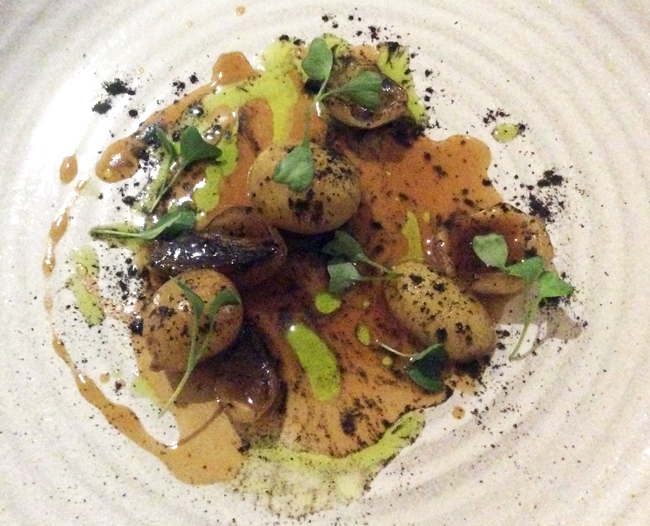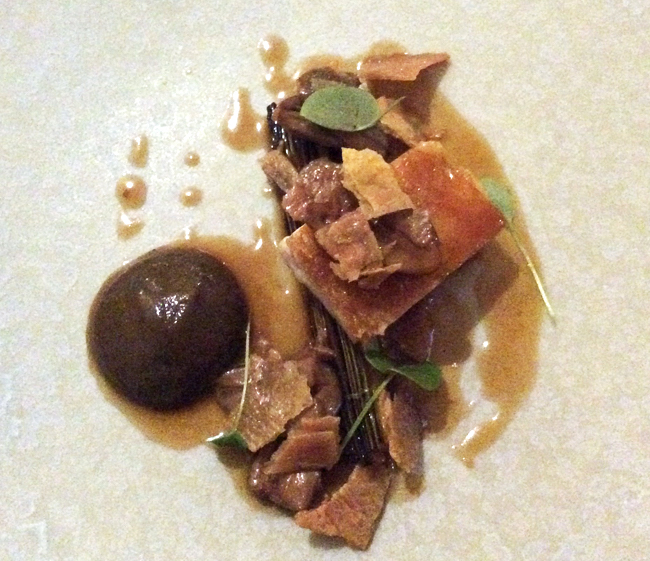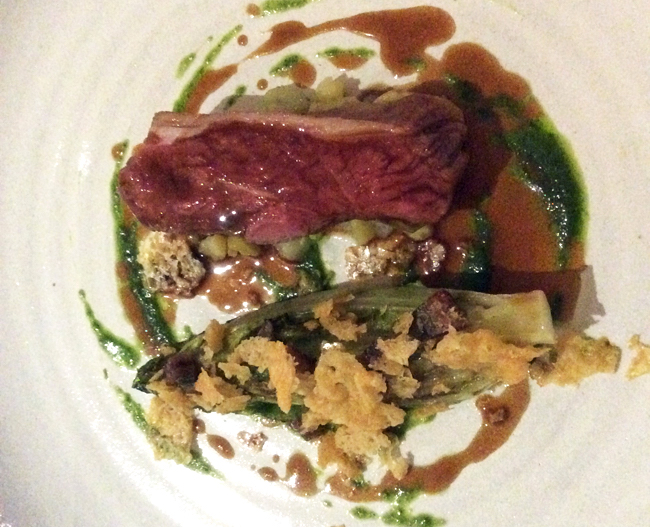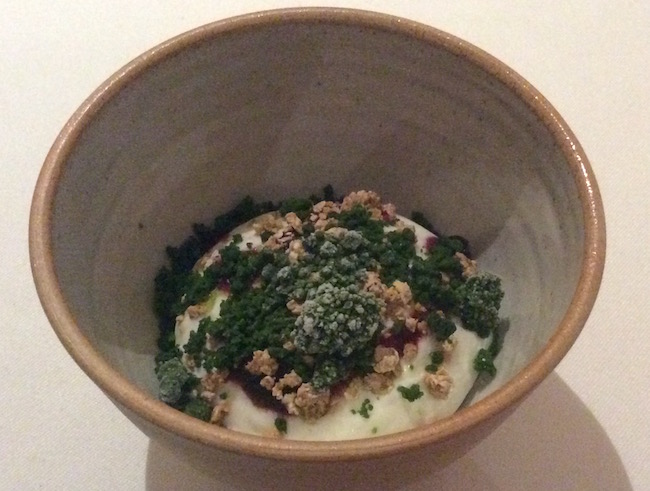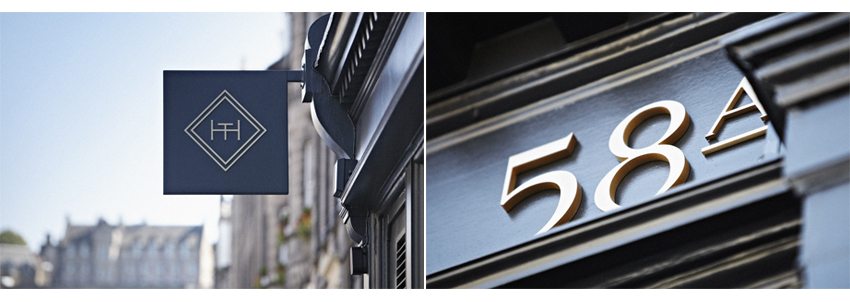
Martin Wishart is Scotland’s most prolific restaurateur. His flagship eponymous restaurant in Leith has retained its Michelin star since 2001. A sister restaurant at Cameron House Hotel in Loch Lomond http://www.mwlochlomond.co.uk/ was similarly garlanded in 2011. The same year saw the opening of The Honours in Edinburgh’s Newtown, in partnership with his longtime friend Paul Tamburrini. Most recently, in 2014, he opened another brasserie of the same name in the Malmaison Hotel, Glasgow. In addition, Martin runs a Cook School and Wishart’s Dining for private functions, and writes articles for the Glasgow Herald.
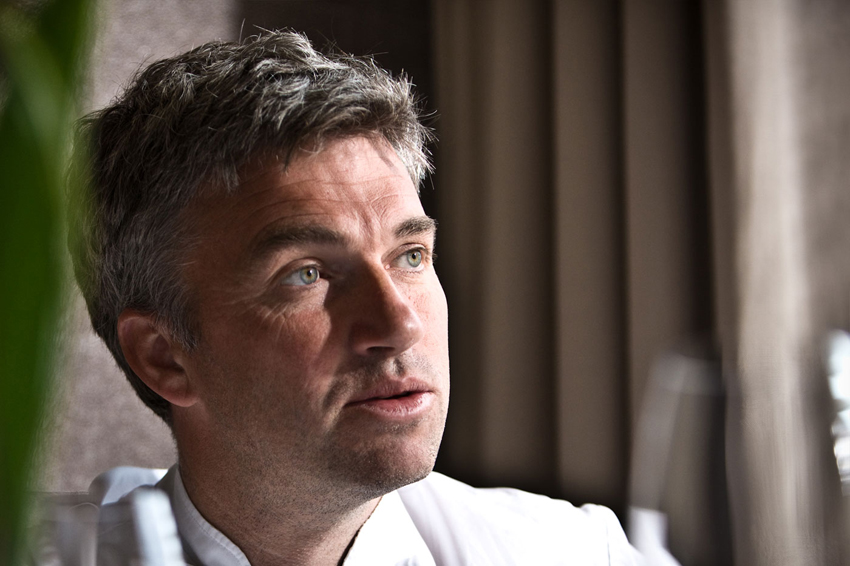
The Honours takes its name from the Scottish crown jewels, the Honours of Scotland http://www.visitscotland.com/about/arts-culture/uniquely-scottish/honours-scotland. The modest glass fronted exterior is in perfect harmony with the grey stoned stepped Georgian terrace of North Castle Street. Inside, contemporary chic décor and furnishings are preferred to the glitzy mirrors and brass of Parisian brasseries. A stylish bar leads to the long, high ceilinged dining room which benefits from giant black pendant light shades, brass wall lights and large mirrors which accentuate the sense of space. Gold painted wall spots contrast with the black and white tiling and the honey toned wood veneer. Low backed leather banquettes and undressed tables add to the elegant, relaxed yet sophisticated feel.
On a busy evening, 140 covers in two sittings can be served by a kitchen brigade between nine and 12, headed by Paul Tamberrini. Sourcing of produce is ethical and seasonal but not totally Scottish. For instance, as the menu proudly states, Atlantic oysters come from the Fal Estuary oyster fishery in Cornwall, “the most sustainable in the world and the last to use rowing boats to harvest the catch.” Classical cooking skills ensure a consistently good end product that is accurately timed, well-seasoned, and attractively presented. This is especially true of the Grill section of the menu featuring prime cuts of Donald Russell grass-fed beef, dry-aged between 28 & 36 days and cooked on a Josper Grill, an indoor barbecue
Roughly 60% of the extensive carte is fixed, the remainder comprising seasonal variations. The choice is suitably wide: 11 starters including “Wishart’s Blend” smoked salmon; seven mains of meat and fish; the Grill with 11 options including Chateaubriand for two; and seven desserts, ice cream and sorbets. Specials might include cote de veau or rack of lamb. A competitively priced set menu – two courses for £18.50, three for £22.50 – is available at lunch and early dinner Tuesday to Friday, the latter being ideal for pre theatre meals.
A classic cocktail selection supplements a select wine list, strong on France but also representative of the New World. Greedy mark ups are avoided, with many wines also being available by the glass and carafe.
Service, overseen by the engaging Steven Spear, is friendly, accommodating and knowledgeable. Faced with an embarrassment of riches on the menu, well briefed front of house staff, dressed in long black aprons, give helpful advice.
Fine Dining Guide visited on a busy Friday evening in March and found much to admire in the high levels of food and service.
Cornish oysters, spectacularly presented on an ice bowl, were paired with granitas of gin fizz and pink champagne, both of which complemented rather than overwhelmed the briny flavour and creamy texture of the bivalve.
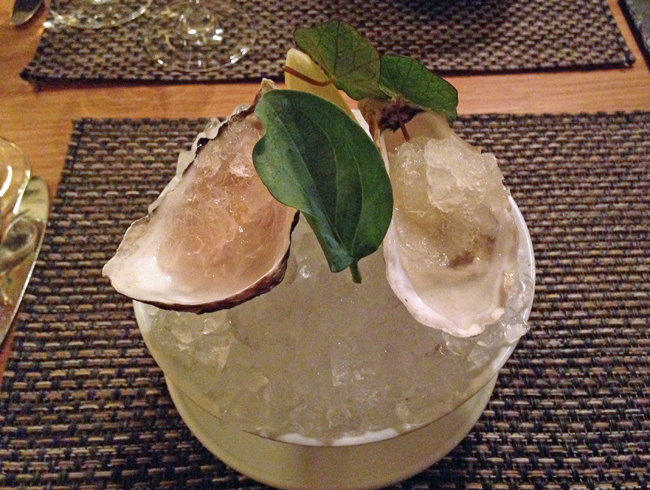
Paul’s Tamburrini’s speciality with pasta dishes was demonstrated in an exquisite starter. Hand rolled, fresh silky smooth tagliatelle was enhanced with fragrant, earthy truffle puree and truffle and potato foam. This was paired with a trio of scallops, perfectly timed to produce a caramelised crust and soft, succulent flesh. This combination of savoury and gently sweet flavours, where pasta and seafood shared equal billing, was an indulgent, memorable dish.
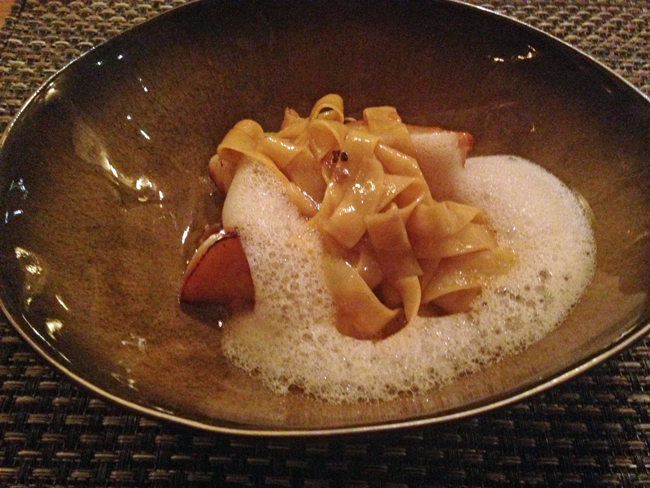
Equally accomplished was a special risotto. Cooked al dente to creamy richness, it benefitted from a flavoursome stock enriched with of nuggets of foie gras and finished with shavings of winter truffle. This was a triumph of gently smoky flavours and nutty textures.
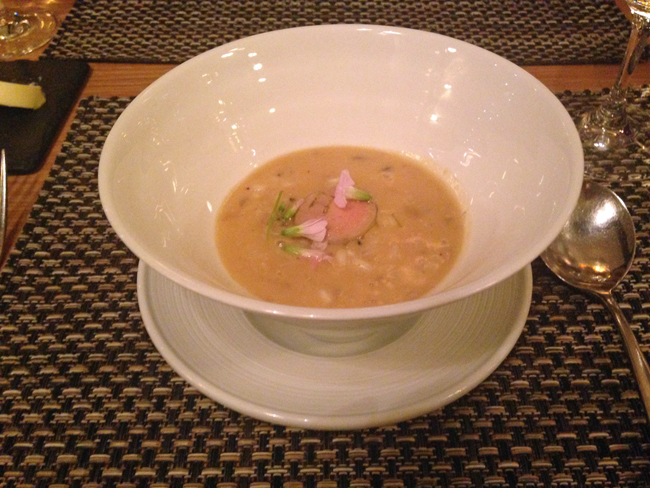
An intermediate course of sautéed John Dory fillet with braised leeks and mussels showed a judicious harmony of flavours and textures. An innovative sauce of curry and Sauternes was mild enough not to overwhelm the clean, fresh taste of the fish.
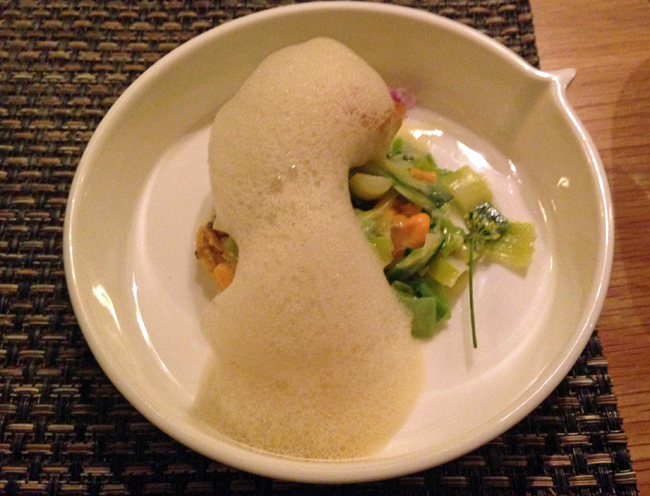
For mains, we decided to share the house speciality: Chateaubriand. It’s a long time since we have chosen this from a menu and it will be an equally long time before we will enjoy it to the exacting standards produced here. Given the essential simplicity of the dish, there is nowhere to hide if this delectable cut in not properly rendered. No such failing with the well-seasoned Honours Chateaubriand, coated with Madeira glaze and chicken stock, cooked over charcoal and briefly finished under the salamander. Almost velvety in texture, with a melting mouth feel and bursting with bovine flavour, the cooking to medium rare did full justice to the meat. Sauce Bearnaise, duck fat chips, crisply battered onion rings, and a lightly dressed green salad which added freshness and cut the richness of the other components, completed this extravagant, composite dish.
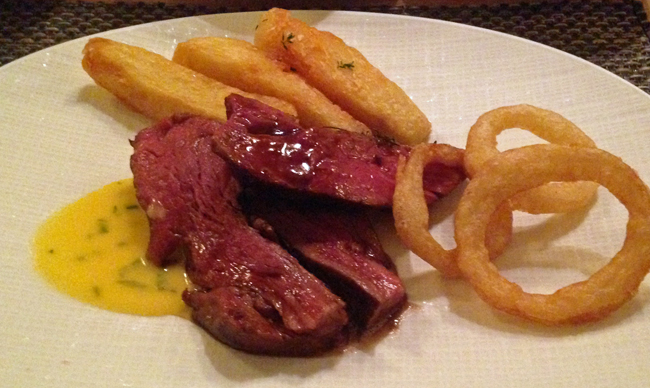
Desserts can often prove an anti-climax on brasserie menus, but not at the Honours. Both of those sampled reflected the strengths of the pastry section.
A layered dark chocolate mousse, topped with a rich ganache, partly resembled a slice of Opera gateau. It was light but deeply flavoured, contrasting in texture with a decorative sugar crisp. Served with a chocolate coated lemon chiboust on a stick in a shot glass with gin and tonic granita, this was a playful, inventive dessert.
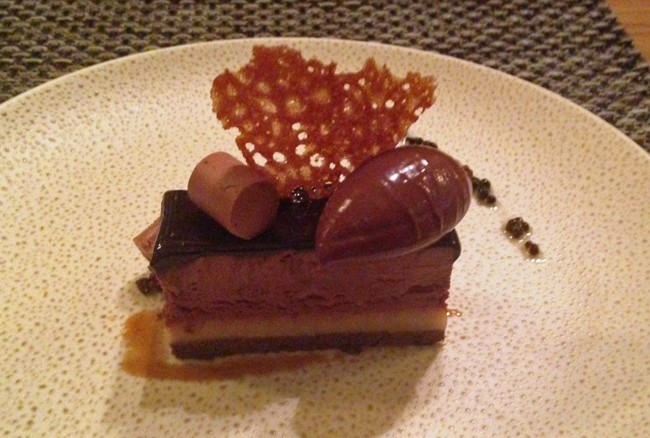
A well risen soufflé of passion fruit and lychee soufflé topped with pineapple sections captured the intense tropical flavours of the fruit. Crisp at the edges and soft in the centre, and served with a smooth, intense lychee sorbet, this was an exemplary dessert, at once light, warm and refreshing.

Overall, this was a memorable meal, demonstrating strengths on all fronts. Honours is clearly several notches above the average chain brasserie, bridging the gap between fine dining and less formal cuisine, with the balance tilting towards the former in terms of the cooking and service, although the atmosphere is more relaxed. Prices reflect the superb quality of the ingredients and the undoubted skill in cooking. Fine Dining Guide will definitely return, sampling dishes from the “Main Plates” which include some of the brasserie classics such as blanquette de veau, rabbit a la moutarde and ox cheek a la Bordelaise. We can’t wait!




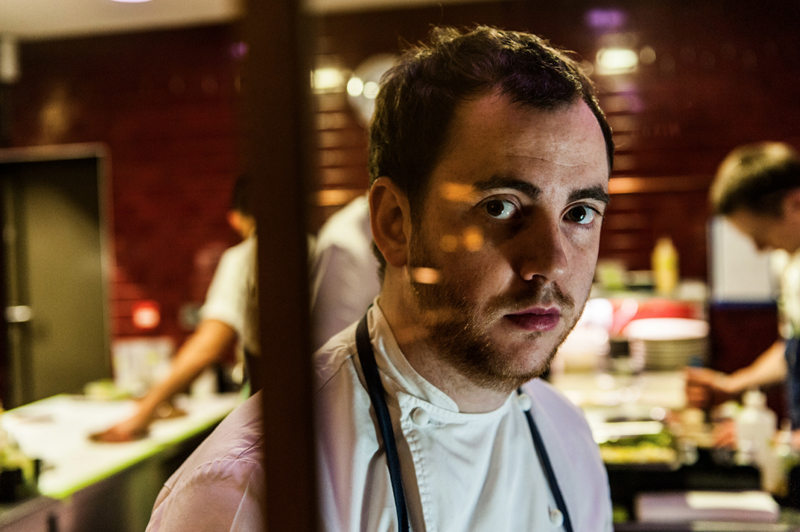

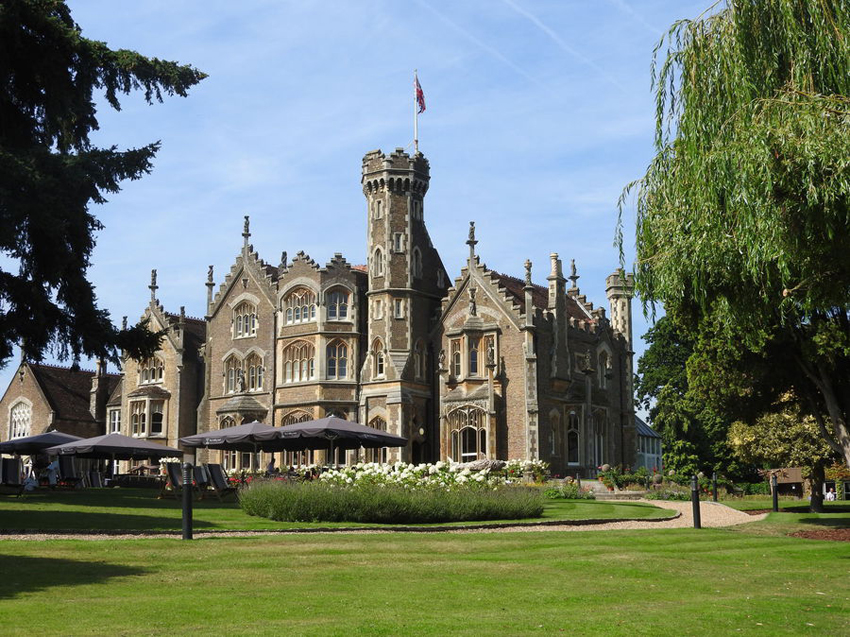
 The recent refurbishment of the Dining Room in natural shades and with bare polished floorboards has created a calm, almost pared-down atmosphere. The clean lines of the wooden paneling and dado rail, the classically restrained sideboards and indeed, the initial absence of cutlery on the table contribute further to a feeling of understated elegance. Ornamentation is confined to the cane backed and Empire inspired designs of the chairs. In contrast a spectacular driftwood sculpture by James Doran-Webb of a leaping hare occupies the centre of the dining room, adding a focus of contemporary extravagance.
The recent refurbishment of the Dining Room in natural shades and with bare polished floorboards has created a calm, almost pared-down atmosphere. The clean lines of the wooden paneling and dado rail, the classically restrained sideboards and indeed, the initial absence of cutlery on the table contribute further to a feeling of understated elegance. Ornamentation is confined to the cane backed and Empire inspired designs of the chairs. In contrast a spectacular driftwood sculpture by James Doran-Webb of a leaping hare occupies the centre of the dining room, adding a focus of contemporary extravagance.

